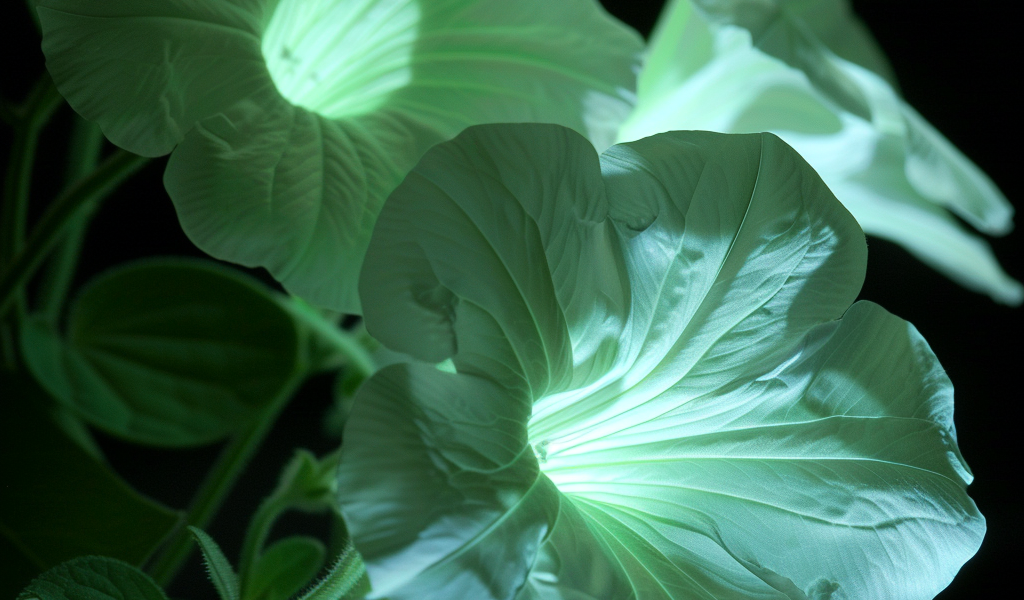Watch your garden glow with new genetically modified bioluminescent petunias
April 8, 2024, 3:01 PM ET
Keith Wood, Ph.D. spent most of his career in pharmaceutical research in molecular and chemical biology, using his work with bioluminescence to understand how molecules interacted with diseases. His work started as a graduate student when the team he was on inserted a firefly gene into a tobacco plant. It was a small plant and couldn’t sustain light without the addition of a substrate. Now, about 40 years after that first plant, Wood and his company in Ketchum, Light Bio, are marketing a garden petunia with a twist: it glows in the dark.
“People don’t think about science as just bringing joy to our lives,” Wood said, “We thought we could do something really special here. We could create a kind of decorative plant that was really just enjoyment, just bringing a kind of magic into our lives.” The petunia with bright, white flowers looks like something you’d buy in spring at a garden nursery. But, when the lights are turned out, the petals slowly start lighting up with a greenish, white glow. The plant is always glowing, it’s just our eyes that need to adjust to see the light. The newest buds are the brightest and punctuate the glowing flowers.
“That’s why we call it the Firefly Petunia. Because these bright buds resemble fireflies sitting on top of the plant,” Wood explained. And despite its name, this plant doesn’t have any firefly genes, rather four genes from a bioluminescent mushroom and a fifth from a fungi.
“The first gene takes a metabolite and turns it into an intermediate,” Wood explained, “The second gene takes the intermediate and turns it into the actual fuel for the bioluminescence. The third gene is what actually makes the light. And then the last gene takes the product from the light reaction and recycles it back to the starting point.” This cycle is self-sustaining, which means it shines brightly and doesn’t need an extra chemical like the tobacco plant did to light up.





